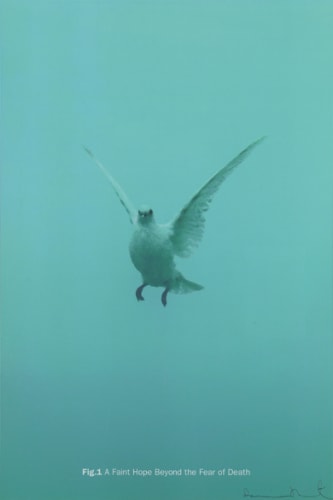Blood on Paper: The Art of the Book reveals the astonishing inventiveness with which the book has been treated by some of the most influential and respected artists of our time. Blood on Paper presents a selection of works from Matisse, Miró and Picasso to Anthony Caro, Damien Hirst and Anish Kapoor and includes a major new work by Anselm Kiefer. On show will be beautifully bound volumes, sculptural works and installations.
Many notable artists of the 20th and 21st centuries have produced books, or works that refer to books. The exhibition displays 60 works by 38 artists and focuses on new and contemporary work but also looks back to the artists working in Paris shortly after World War II, who gave a new breath of life to the genre of the ‘livre d’artiste’.
Anselm Kiefer’s monumental book The secret life of plants (2008) has been commissioned for Blood on Paper. Created in lead and cardboard and standing almost two metres tall, it will be installed at the entrance to the exhibition. Three other large-scale works by Kiefer will also be exhibited. Anish Kapoor’s intimately disturbing Wound (2005) is a work in four parts, the third of which is a book sculpture with a ‘wound’ laser-cut through hundreds of sheets of paper. All four parts including drawings will be on display.
Two cabinets from Damien Hirst’s New Religion (2005) will be on show. The first is a black leather cabinet entitled Jesus Christ and the second a white leather cabinet named Saint Philip. The cabinets open to reveal five satin lined compartments each holding Hirst sculptures, The Crucifix, The Fate of Man, The Eucharist, The Sacred Heart and a single butterfly painting. A set of drawers house 44 silkscreen prints in cloth-bound portfolios. Each cabinet reflects Hirst’s concern with issues such as belief, mortality, love, seduction and consumption.
Picasso’s Deux Contes (1947) and Matisse’s Jazz (1947) are among works which set an international standard for the ‘livre d’artiste’. Artists have reacted in different ways to the possibilities offered by books as a means of expression. Powerful interpreters of texts include Balthus and his dramatic illustrations for the narrative of Wuthering Heights (1993), while Louise Bourgeois’ spiders in Ode à Ma Mère (1995) almost creep out of the page.
Set against these finely-printed editions are commercially produced publications by Edward Ruscha and Jeff Koons. Copies of Ruscha’s Twenty six gasoline stations (1962) were sold for $1 at supermarkets to avoid the gallery and art-publishing network. The Jeff Koons Handbook (1992) is the first book where Koons himself presents his work and is billed as an ‘indispensable paper-back guide to his art and ideas’.
Blood on Paper aims to show books as a unique way of seeing artists’ creative processes. The results range from the humble to the sophisticated, from traditional fine printing to advanced computer-based methods of design and craftsmanship. Martin Parr’s Benidorm Album (1997) uses the simple solution of a standard mount for his book of colour photographs. The creative partnership between artist and publisher is highlighted in Anthony Caro’s Open Secret (2004). Caro and Ivory Press worked closely together using advanced technology in metal fabrication to create books in stainless steel and bronze.
Blood on Paper: The Art of the Book is co-curated by Rowan Watson, Senior Curator in the National Art Library, part of the Word & Image Department at the V&A and Elena Foster, founder and director of Ivory Press, publisher of limited edition books containing original works of art by contemporary artists. Nine works are on loan from Ivory Press for this exhibition including Anish Kapoor’s Wound and Anthony Caro’s Open Secret.
Rowan Watson said, “In all their myriad formats, books continue as among the most potent means of artistic expression. This exhibition examines what happens when major artists of today – all of whom have established their presence through
other media – consider the matter of making books. In many, such is the fusion between text and image that subsequent readings of either text or image in different contexts appear impoverished.”
Elena Foster said, “Passion and energy are the creative blood which permeates all of these works. Yet Blood on Paper aims to break away from the conventions of the artists’ book, to show how the genre has developed from the historically important ‘livre d’artiste’ of Matisse and Picasso to powerful contemporary interpretations of Kiefer and Caro who have used lead and metal instead of paper.”

